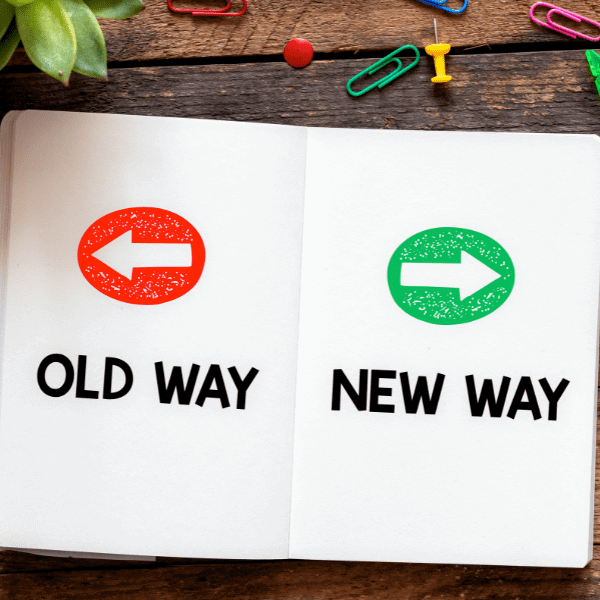Beyond the traditional approaches with ADKAR

Recent Blogs
Why AI won’t save a broken project
Belonging Before Performance: why culture eats capability for breakfast
You’re allowed to outgrow old versions of yourself
From Assigned to Accountable: Why title alone isn’t leadership
Leading in the Grey
Why Project Teams should start with curiosity, not connection
Unlearning is the leadership skill nobody talks about
Conflict handled well is a doorway to trust
Life keeps teaching until we listen
What is your go to change framework? I am a fan of ADKAR.
Jeff Hiatt, the founder of Prosci, developed the ADKAR ® model in the mid-1990s as a framework to facilitate individual change and subsequently published it in his book “ADKAR: a Model for Change in Business, Government, and Our Community” in 2006.
- Awareness of the need for change
- Desire to participate and support the change
- Knowledge on how to change
- Ability to implement new skills and behaviours
- Reinforcement to sustain the change
Last week I was with a transformation team to review the project’s change plan and asked why they had focused on the traditional invite people to the change and very little about how to attract people to the change.
Successful change management involves a fine balance between structured planning (push or invite) and enabling environments that genuinely draw individuals toward the change (pull or attract). By combining the traditional frameworks with innovative engagement strategies, organisations would find a more meaningful and sustainable approach to leading change.
A Fresh Look:
ADKAR ® is hailed for its simplicity and effectiveness in outlining the sequential steps necessary for change at an individual level. However, the methodologies employed to navigate through each of these stages have come under scrutiny for often being repetitive and predictably conventional – workshops, newsletters, and training sessions have all become somewhat expected in this domain. But what if we dared to reimagine this approach?
Gamifying the Change Journey:
The integration of gamification into change management can significantly elevate the engagement and enthusiasm of individuals navigating through change. By introducing elements such as competitions, rewards, and interactive challenges related to the change, organisations can transform often-dreary information dissemination sessions into exciting, memorable experiences. Not only does this strategy cater to the ‘Awareness’ and ‘Desire’ stages by creating a vibrant, enticing environment, but it also subtly imparts ‘Knowledge’ through playful learning.
Harnessing the Power of Technology:
In an era dominated by digital interaction, leveraging technology becomes imperative in sculpting effective change management strategies. Whether through the development of dedicated apps to guide and monitor progress or the utilisation of VR (virtual reality) to allow individuals to immerse themselves in the prospective change, technology provides an innovative platform to build ‘Knowledge’ and enhance ‘Ability’. It offers an interactive, user-friendly means to convey necessary information, practical training, and real-time feedback, thereby optimising the learning and adaptation process.
Nurturing a Culture of Inclusivity:
One of the critical stumbling blocks in the change management journey is resistance stemming from a sense of alienation or imposition. Involving individuals in decision-making forums, creating spaces for them to voice their concerns, and genuinely acknowledging and incorporating their feedback, can create a strong pull towards accepting and embracing change. This strategy not only elevates ‘Desire’ by making individuals feel valued and heard but also strengthens ‘Reinforcement’ by building a collective, inclusive change culture.
Storytelling: Weaving the Narrative of Change:
Stories, with their inherent capability to evoke emotions and implant visions, can serve as potent tools to illustrate the necessity, processes, and envisaged outcomes of change. Crafting compelling narratives and delivering them through diverse multimedia formats such as videos, podcasts, or even visually striking comic strips, can create a powerful impact, building ‘Awareness’ and fostering ‘Desire’ in an emotive, relatable manner.
Establishing Learning Labs:
Imagine a space where employees can experience, experiment, and explore the impending change without the fear of repercussions. Learning labs or innovation hubs can serve as safe havens for employees to traverse through the ‘Knowledge’ and ‘Ability’ phases, providing them with hands-on experience and insight into both the present and the future state, thus facilitating a smoother, less intimidating transition.
Real-time Feedback Mechanisms:
Change is dynamic, and thus, our strategies to lead it must be adaptable. Establishing mechanisms to gather real-time feedback and being nimble enough to adjust the course accordingly ensures that the change management process remains relevant, practical, and aligned with the evolving needs and challenges encountered by individuals, ensuring robust ‘Reinforcement’.
Advocating Peer Champions:
Identifying and empowering individuals from within the organisation as change champions can effectively bridge the gap between management and team members. Equipping them with the requisite tools, platforms, and autonomy to share their experiences, learnings, and support can cascade motivation and guidance throughout the organisation, subtly aiding all stages of the ADKAR model.
As project and change leaders, while we rely on structured models like ADKAR to guide us, it is pivotal to remember that the real magic often lies in the unconventional, the innovative, and the unexpected. Infusing these elements into our change management practices not only revitalises the journey for the individuals involved but also significantly enhances the probability of successful, sustainable change.
Let us dare to step beyond the conventional and explore the myriad possibilities that lay in weaving innovative strategies into our change management tapestry.
